Definition
Uterine fibroid is the most common benign (not cancerous) tumor of a woman’s uterus (womb). Fibroids are tumors of the smooth muscle found in the wall of the uterus. They can develop within the uterine wall itself or attach to it. They may grow as a single tumor or in clusters. Uterine fibroids can cause excessive menstrual bleeding, pelvic pain, and frequent urination.
Uterine fibroids
History
In the period of Hippocrates in 460-375 B.C., this lesion was known as the “uterine stone”. Galen called this finding “scleromas” during the second century of the Christian period. The term fibroid was coined and introduced in 1860 by Rokitansky and in the 1863 by Klob.
In 1854, a German pathologist named Virchow demonstrated that these neoplasms (fibroids) were composed from smooth muscle cells. It was Virchow who introduced the word “myoma”.
Historical treatments for uterine fibroids
- In 1809, Danville, USA, the first laparotomy was performed consequent to an indication of myoma. Mrs. Jane Todd Crawford, President Abraham Lincoln’s cousin, was 56 years old when she had an abdominal distention and appeared as if she was pregnant with twins. Laxatives, enemas and phytotherapy were first given as treatments to relieve the distention and volume in the abdomen. A surgeon named Ephraim Mcdowell performed a laparotomy to remove the ovarian cyst containing complex content and when it was analyzed. It was known to be a pediculate leimyoma.
- The first successful operation of uterine fibroids through myomectomy was performed in 1840 by Jean Zuléma Amussat of Paris. In 1842, Amussat reported two submucous fibromyoma cases in which vaginal myomectomies were performed. Later, Dr. Washington Atlee from Pennsylvania was recognized as the first who performed a successful abdominal myomectomy operation that appeared in the American Journal of Medical Science in 1845.
- In 1853 Gilman Kimball of Massachusetts conducted the first deliberate myomectomy after diagnosing his patient with uterine fibroids. He is also the first doctor to successfully perform a hysterectomy for the purpose of removing uterine fibroids .
- Myomectomy was abandoned until 1922 when British surgeon Victor Bonney, invented the Clamp for myomectomy in an attempt to decrease intra-operatory bleeding. By 1930, Victor reported 403 myomectomy cases with minimal fatalities. As medical knowledge evolved so did the treatment methods for uterine fibroids.
Epidemiology of uterine fibroids
The true incidence and prevalence of uterine fibroids in the general female population are unknown because the condition is frequently asymptomatic and therefore not identified. Incidence increases with age during the reproductive years such that cases occur in 20% to 50% of women older than 30 years. By extrapolation of findings from a prospective histopathology study of 100 consecutive total hysterectomy specimens, the prevalence of uterine fibroids in the general female population may be as high as 80% and is unchanged by menopausal status. From a cohort of 116,678 premenopausal nurses formed in 1989 (Nurses’ Health Study II), a resulting population of 95,061 premenopausal women with intact uteri was identified and completed a health questionnaire in 1993. New cases of uterine fibroids diagnosed by pelvic examination, ultrasound, or hysterectomy during a 4-year interval ending in May of 1993 were identified. The crude incidence of uterine fibroids in this study was about 1% per year. The incidence was shown to be significantly increased with advancing age, black race (3-fold), increased BMI, history of infertility, and current alcohol consumption. In another study, the estimated cumulative incidence by age 50 was >80% for black women and approaching 70% for white women. Uterine fibroids represent the most common solid tumours of the female pelvis and are the leading cause for hysterectomy.
Types of Fibroids
Different fibroids develop in different locations in and on the uterus.
Intramural Fibroids: Intramural fibroids are the most common type of fibroid. These types appear within the muscular wall of the uterus. Intramural fibroids may grow larger and can stretch your womb.
Subserosal Fibroids: Subserosal fibroids form on the outside of your uterus, which is called the serosa. They may grow large enough to make your womb appear bigger on one side.
Pedunculated Fibroids: When subserosal tumors develop a stem (a slender base that supports the tumor), they become pedunculated fibroids.
Submucosal Fibroids: These types of tumors develop in the middle muscle layer (myometrium) of your uterus. Submucosal tumors are not as common as other types, but when they do develop, they may cause heavy menstrual bleeding and trouble conceiving.
Risk factors of uterine fibroids
There are few known risk factors for uterine fibroids, other than being a woman of reproductive age. Other factors that can have an impact on fibroid development include:
Heredity: If your mother or sister had fibroids, you’re at increased risk of developing them.
Race: Black women are more likely to have fibroids than women of other racial groups. In addition, black women have fibroids at younger ages, and they’re also likely to have more or larger fibroids.
Environmental factors: Onset of menstruation at an early age; use of birth control; obesity; a vitamin D deficiency; having a diet higher in red meat and lower in green vegetables, fruit and dairy; and drinking alcohol, including beer, appear to increase your risk of developing fibroids.
Causes
Experts don’t know exactly why you get fibroids. Hormones and genetics might make you more likely to get them.
Hormones: Estrogen and progesterone are the hormones that make the lining of your uterus thicken every month during your period. They also seem to affect fibroid growth. When hormone production slows down during menopause, fibroids usually shrink.
Genetics: Researchers have found genetic differences between fibroids and normal cells in the uterus.
Symptoms
When women do experience symptoms, the most common are the following:
- An increase in menstrual bleeding, known as menorrhagia, sometimes with blood clots;
- Pressure on the bladder, which may cause frequent urination and a sense of urgency to urinate and, rarely, the inability to urinate;
- Pressure on the rectum, resulting in constipation;
- Pelvic pressure, “feeling full” in the lower abdomen, lower abdominal pain;
- Increase in size around the waist and change in abdominal contour (some women may need to increase their clothing size but not because of a significant weight gain);
- Infertility, which is defined as an inability to become pregnant after 1 year of attempting to get pregnant; and/or
- A pelvic mass discovered by a health care practitioner during a physical examination.
Diagnosis and test
Fibroids are most often found during a routine pelvic examination. This, along with an abdominal examination, may indicate a firm, irregular pelvic mass to the physician. In addition to a complete medical history and physical and pelvic and/or abdominal examination, diagnostic procedures for uterine fibroids may include:
X-ray: Electromagnetic energy used to produce images of bones and internal organs onto film.
Transvaginal ultrasound (also called ultrasonography): An ultrasound test using a small instrument, called a transducer, that is placed in the vagina.
Magnetic resonance imaging (MRI): A non-invasive procedure that produces a two-dimensional view of an internal organ or structure.
Hysterosalpingography: X-ray examination of the uterus and fallopian tubes that uses dye and is often performed to rule out tubal obstruction.
Hysteroscopy: Visual examination of the canal of the cervix and the interior of the uterus using a viewing instrument (hysteroscope) inserted through the vagina.
Endometrial biopsy: A procedure in which a sample of tissue is obtained through a tube which is inserted into the uterus.
Blood test: To check for iron-deficiency anemia if heavy bleeding is caused by the tumor.
Treatment and medications
- If there are no symptoms and the fibroids are not affecting an individual’s quality of life, treatment may not be necessary.
- If fibroids lead to heavy periods, but these do not cause major problems, the woman may choose not to have treatment.
- During menopause, fibroids often shrink, and symptoms often become less apparent or even disappear completely.
- When treatment is necessary, it may be in the form of medication or surgery.
- The location of the fibroids, the severity of symptoms, and childbearing plans can all affect the decision.
Treating fibroids with medication
- Gonadotropin-releasing hormone agonist (GnRHA) causes the body to produce less estrogen, which shrinks the fibroids. GnRHA stops the menstrual cycle, but it does not affect fertility once treatment stops.
- GNRHAs can cause menopause-like symptoms, including hot flashes, a tendency to sweat more, vaginal dryness, and, in some cases, a higher risk of osteoporosis.
- They may be given before surgery to shrink the fibroids. GNRHAs are for short-term use only.
Other drugs may be used, but they are less effective when treating larger fibroids.
These include:
Anti-inflammatory drugs: These include mefenamic and ibuprofen. Anti-inflammatory medications reduce the production of prostaglandins, which are normally associated with heavy periods. Anti-inflammatory drugs are also painkillers. They do not affect fertility.
Birth control pills: Oral contraceptives help regulate the ovulation cycle, and they may help reduce menorrhagia.
Levonorgestrel intrauterine system (LNG-IUS): A plastic device, placed inside the uterus, releases a progestogen hormone called levonorgestrel.
The hormone stops the lining of the uterus from growing too fast, which reduces bleeding. Adverse effects include irregular bleeding for up to 6 months, headaches, breast tenderness, and acne. It can, in some cases, stop periods.
Symptoms of uterine fibroids
If symptoms are severe and medical therapy has failed, surgery may be necessary.
The following procedures may be considered:
Hysterectomy: Removing the uterus is considered if the fibroids are very large, or if the patient is bleeding excessively. A hysterectomy can prevent fibroids returning. If a surgeon removes the ovaries and fallopian tubes, side effects can include reduced libido and early menopause.
Myomectomy: Fibroids are surgically removed from the wall of the uterus. It can help women who still want to have children. Women with large fibroids, or fibroids located in particular parts of the uterus, may not benefit from this surgery.
Endometrial ablation: Removing the lining of the uterus may help if fibroids are near the inner surface of the uterus. It can be an effective alternative to a hysterectomy.
Uterine artery embolization (UAE) or uterine fibroid embolization (UFE): The cutting off of the blood supply to the area shrinks the fibroid. A chemical is injected through a catheter into a blood vessel in the leg, guided by X-ray scans. It reduces or removes symptoms in up to 90 percent of fibroid patients, but it is not suitable for women who still wish to have children.
MRI-guided percutaneous laser ablation: An MRI scan is used to locate the fibroids. Then, fine needles are inserted through the patient’s skin and pushed until they reach the targeted fibroids. A fiber-optic cable is inserted through the needles. A laser light goes through the cable and shrinks the fibroids.
MRI-guided focused ultrasound surgery: An MRI scan locates the fibroids, and sound waves are used to shrink them.
Prevention of uterine fibroids
- Women should avoid weight gain after age 18 and maintain a normal body weight compared to height. Body weight tends to increase estrogen production, thus aggravating fibroid growth. Exercise can help women control weight and additionally decrease hormone production that stimulates fibroid growth.
- Tobacco use has not been proven to be linked to an increase in fibroids. But quitting smoking will improve general health and well being of women that have fibroids.
- Routine health visits with a health care practitioner may allow for early detection of fibroids.
 Diseases Treatments Dictionary This is complete solution to read all diseases treatments Which covers Prevention, Causes, Symptoms, Medical Terms, Drugs, Prescription, Natural Remedies with cures and Treatments. Most of the common diseases were listed in names, split with categories.
Diseases Treatments Dictionary This is complete solution to read all diseases treatments Which covers Prevention, Causes, Symptoms, Medical Terms, Drugs, Prescription, Natural Remedies with cures and Treatments. Most of the common diseases were listed in names, split with categories.
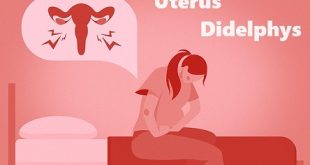
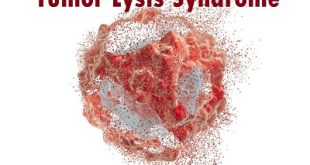
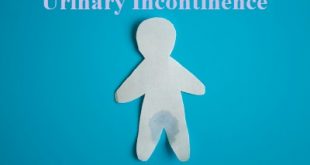
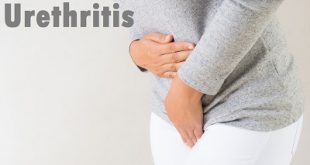

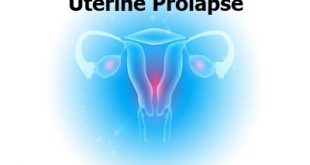
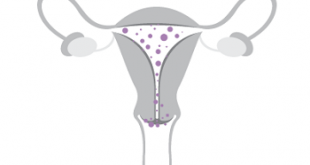

my wife has fibroid affecting her menses negatively
sir its better to consult gynecologists to get rid off uterine fibroid before it goes to peak stage.
pls I have a fibroid by d side of my uterus. pls is there any recommended drugs for me dat can shrink it or should I go for surgery. Am 31yrs old and not yet married.
dear mam, consult near by gynecologist for initial checkup.
get your solution for that unending illness from a man who used herbs to cure my genital herpes, contact him via [email protected] and end your worries
my period flow for more than one month please I need help
Its better to consult gynecologist.
my mum has fibroid how can she help her self on it
Please consult with cardiology specialist. They will diagnose you for the respective treatment.
hello I have intramural fibroids&endometria can I still get pregnant am 47,
consult a gynecologist.
my wife had her fibroids removed and we followed up every DR’s orders and now she seems to have the same pains that she used to have before the operation. the operation was done in 2017 may.I am confused,do not know what next.the same pains are back again
Please follow some natural treatments.
I have fibriod and is affecting from being fertile
Please consult a good gynecologist.
my wife has fibroid and we have try all possible means locally because we Fair surgery ,is their anything we can do please
It is better to discuss with a doctor.
good morning I have a enlarge uterine fibroids and I don’t want to do surgery what would you recommend thank you
please consult a gynecologist to get rid of this problem.
How do I improve on my diagnostic skills on uterine fibroids using ultrasound procedure/machine?
yes only by Ultrasound procedure you can diagnosis uterine fibroid.
can uterine fibroid cause early miscarriage of about 1month and some week
Yes, it is possible to have a miscarriage at 1st and 2nd month.
is surgery the only cure for it
Yes, a small laparoscopic surgery will cure this.
please have been having irregular menstruation for about a year ago,what does that mean
Please consult a gynecologist as soon as possible.
My 92yr. old friend has a benign uterine mass. She has chronic back pain. Is there any possible help for her fibroids considering her age?
I should be grateful for your advice . THANKS
it’s not possible to get the cure at the age of 92, but to decrease the symptoms please consult a doctor.
my wife has fibroid that made our first born die b4 birth. she got operated that the baby may be removed. the following day the Dr. told her that she has fibroids.due to the pain she went though,she said she will never be operated again. Is there any drug she can take 4 I need a baby?
please consult a gynecologist.
sir, am some weeks pregnant and I went to scan thy said I have fibroid too. please what do I do and I want my baby
Please consult with the doctor. Conceiving a baby with fibroid will definitely affect the baby.
Good.
How can fibroid be control.
Add these whole foods to your daily diet to control fibroids:
Raw and cooked vegetables and fruit such as dried fruit, whole grains, brown rice, lentils and beans, whole grain bread and pasta, couscous, quinoa, fresh and dried herbs.
Good food for fibroids and ovarian cyst
This nutrient is known to help with reducing painful cramps associated with ovarian cysts. Increase your body’s magnesium stores by eating:
◦ Dark leafy green vegetables like turnip greens, Bok choy, beet greens and Swiss chard
◦ Fruits like bananas, prunes, and avocados
◦ Cashews and almonds
◦ Raw cacao nibs
◦ Sunflower and pumpkin seeds
can ampiclos bissam cure fibroids
It may not be treated permanently. Should consult a doctor for a better prescription.
My wife even when she is not on her period,she can experience some drops of blood on her pant. she has once undergone a fibroid operation. so what can we do to solve that problem?
it might the effects of surgery. please consult a doctor.
i am suffering from uterine fibroid .i am unmarried and want to remove it please tell me did it effect on my life after marriage and what is the best treatment of it
Please consult a doctor.
I have fibroid and I have lose 3pregnacy and my menstruation has stop since 3months now
what should I do?
Please consult a doctor to diagnose the problem.
my wife has fibroids can she get me a child. is fibroids treatable.
Most women who have uterine fibroids are able to become pregnant without too many issues. In rare cases, uterine fibroids may make it more difficult to become pregnant if they block the fallopian tubes or cause the uterus to become misshapen, which may make it more difficult for an egg to attach to the uterus’s lining. However, please consult a gynecologist.
pls can fibroid cause a weight loss like HIV and aids.
The more susceptible you are to fibroids, which may cause you to gain even more weight.
I was diagnosed of uterine fibroid and am 28 and yet married and don’t have pains rather,so how do I go about it?
You may continue to take prescribed medicines and continues to follow a proper diet.
please is there any drug one can use to control fibroid from growing, and to curb heavy menstrual flow
Gonadotropin-releasing hormone (GnRH) agonists. Medications called GnRH agonists treat fibroids by blocking the production of estrogen and progesterone, putting you into a temporary menopause-like state.
I have fibroid and married for 4years know issues what drugs c an I use
Please consult a doctor to get medicines for fibroids.